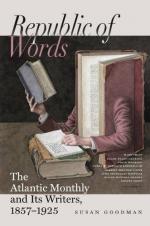The necessary thickness of armor is simply a question of powder, and will be further referred to under the heads of Ordnance and Naval Architecture.
ORDNANCE AND PROJECTILES.
Condition of Greatest Effect. It is a well-settled rule, that the penetration projectiles is proportionate directly to their weight and diameter, and to the square of their velocity. For example, the 10-1/2-inch Armstrong 150-pound shot, thrown by 50 pounds of powder at 1,770 feet per second, has nearly twice the destructive effect upon striking, and four times as much upon passing its whole diameter through armor, as the 15-inch 425-pound shot driven by the same powder at 800 feet. The American theory is, that very heavy shot, at necessarily low velocities, with a given strain on the gun, will do more damage, by racking and straining the whole structure than lighter and faster shot which merely penetrate. This is not yet sufficiently tested. The late remarkable experiments in England—firing 130-and 150-pound Whitworth steel shells, holding 3 to 5 pounds of powder, from a 7-inch Armstrong gun, with 23 to 27 pounds of powder, through the Warrior target, and bursting them in and beyond the backing—certainly show that large calibres are not indispensable in fighting iron-clads. A destructive blow requires a heavy charge of powder; which brings us to
The Strain and Structure of Guns, and Cartridges. The problem is, 1st, to construct a gun which will stand the heaviest charge; 2d, to reduce the strain on the gun without reducing the velocity of the shot. It is probable that powder-gas, from the excessive suddenness of its generation, exerts a percussive as well as a statical pressure, thus requiring great elasticity and a certain degree of hardness in the gun-metal, as well as high tensile strength. Cast-iron and bronze are obviously inadequate. Solid wrought-iron forgings are not all that could be desired in respect of elasticity and hardness, but their chief defect is want of homogeneity, due to the crude process of puddling, and to their numerous and indispensable welds. Low cast-steel, besides being elastic, hard, tenacious, and homogeneous, has the crowning advantage of being produced in large masses without flaw or weld. Krupp, of Prussia, casts ingots of above 20 tons’ weight, and has forged a cast-steel cannon of 9 inches bore. One of these ingots, in the Great Exhibition, measured 44 inches in diameter, and was uniform and fine-grained throughout. His great success is chiefly due to the use of manganesian iron, (which, however, is inferior to the Franklinite of New Jersey, because it contains no zinc,) and to skill in heating the metal, and to the use of heavy hammers. His heaviest hammer weighs 40 tons, falls 12 feet, and strikes a blow which does not draw the surface like a light hammer, but compresses the whole mass to the core. Krupp is now introducing the




